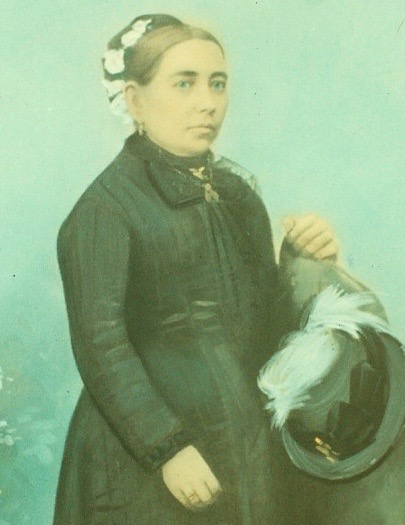
Traveler: Maria Nestora (Peña) Rivera
When and Where: Rowland-Workman Party, 1841, with parents, Juan Felipe and Maria Ysabel (Armijo) Peña/Armijo and five brothers. Juan Felipe Peña, and Juan Manuel Vaca/Baca, also a traveler, were business partners.
Submitted by: Cecelia Peña, Oakland, California
Relationship: Nestora was my paternal great-great aunt.
Profile:
Nestora Peña (1836-1922), born near present-day Santa Fe, New Mexico, was the youngest child and only girl of the Peña family who settled in Vacaville, California, in 1841 after a two-month journey on the Old Spanish Trail with the Rowland-Workman Party.
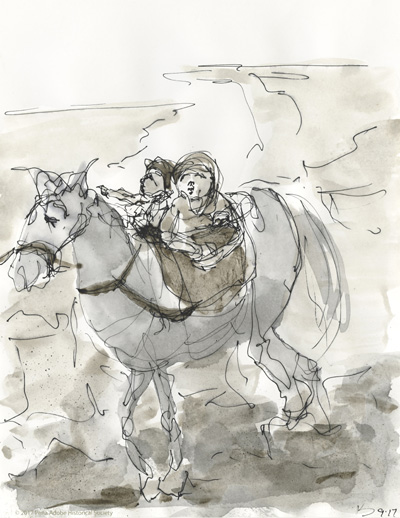
Nestora is best known as one of two children who traveled in the saddle bag of a “gentle mule” because she was too young to walk the trail. The other saddle bag held young Maria Antonia Apolonia Baca (1838-1919), youngest daughter of Juan Manuel Baca/Vaca, namesake of Vacaville, California. This moment-in-time was passed down as a family recollection from Nestora to her nieces. A second story shared was that Nestora was sometimes “carried by her father on a pillow on his horse, and the cacti was in bloom all across the desert.”
For the traders, a couple of months with limited food and water did not qualify as hardship. No one died and nobody attacked the party. For the young people, the deprivation must have been difficult. The two-month journey was arduous with moments of beauty and hours of travel over the roughest of trails. Did they already miss the family and friends they would never see again? Things would get better but they didn’t know that yet.
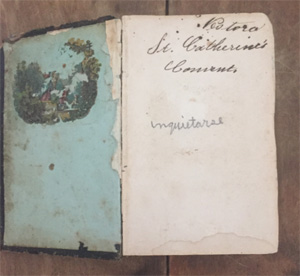
Nestora and Apolonia’s fathers sent the girls off to St. Catherine’s Female Academy in Benicia, California. There, Nestora took classes in Christian Doctrine in Spanish, Sacred History, Spanish Arithmetic, and Plain Sewing. She also learned to read and write English. When she was home from school, she would read to and teach whomever was around. In the photo below, you can see the title page of a little prayer book she used at St. Catherine’s. The word “inqueitarse” (restless) is written in a child’s handwriting on the page. Was this word a window into Nestora’s mood?
Nestora inherited the adobe and about 900 acres when her father, Juan Felipe died in 1863. She was married to Jesus Tapia Rivera in 1881.
Nestora hired her nephew, Vidal Polocarpio Peña (my grandfather) to manage her ranch when her husband became ill. Jesus Tapia Rivera passed away in 1900. Although she had no children of her own, she devoted her life to her family and her home. She was said to have a fine memory and was often sought after in her community for help and advice.
During Nestora’s ownership, the adobe was protected from the elements by building a white wooden house around it! The interior adobe was cool during the summer and for a number of years, niece Maria Dolores, returned to the home to take advantage during the summer.
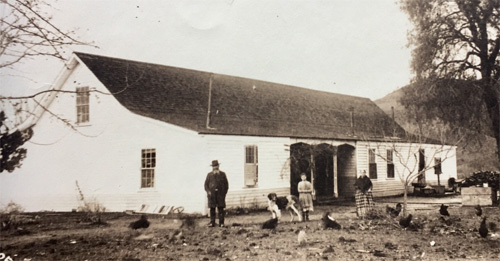
Nestora lived in the adobe until 1918 and went to live with family until her death in 1922.
Vidal Peña, also a Vacaville attorney, was her Executor. He reported that her estate, after all obligations, was around $26,000. Vidal and Maria Dolores inherited land. Other relatives, a church in Vacaville, the Dominican Sisters of Benicia, and a City of Vacaville park with a playground were some other recipients of her generosity.
The Peña Adobe, which remained in the family until 1957, is considered to be the oldest restored structure in Solano County. It is California Landmark #534, and a Vacaville City Park.
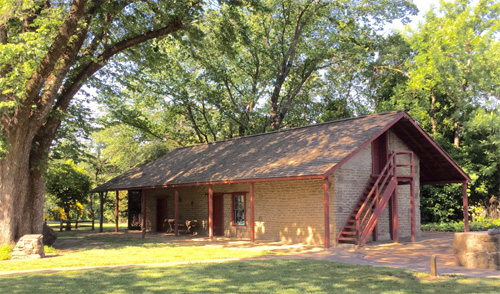
Interest: Nestora’s story was the first tale I heard as a child. When I finally met my old Great Aunt Rose, another niece of Nestora, I sat there in awe that I was in the presence of such history. It was as if I could reach back in time. She actually KNEW Nestora. My life was forever changed!
Where did she settle: Vacaville, California, approximately 50 miles North East of San Francisco.
Unique Story or Fact: I was amused to discover that according to Wood Young, the author of The Peña Adobe, the story about Apolonia and Nestora was a Vaca/Baca story as told to niece Maria Dolores (Peña) Lyon, whose mother was a Vaca, and the story of her on a pillow on her father’s horse was a story Nestora told to a Peña niece, Rose (Peña) Coombs. Both stories were cherished in my family.
Sources:
Vaca-Peña Los Putos Rancho and the Peña Adobe by Wood Young, Wheeler Printing and Publishing, Vallejo, CA 1965, p. 3
Nestora Peña Rivera and the Peña Adobe by Richard Lyon, October, 2017
The Rose (Peña) Coombs Letters, conversations between Rose Coombs and Wood Young 1963-1964, author of Vaca-Peña Los Putos Rancho and the Peña Adobe, unpublished
Juan Manuel Baca Family Group (both wives) by Alexander V. King
Family oral history
